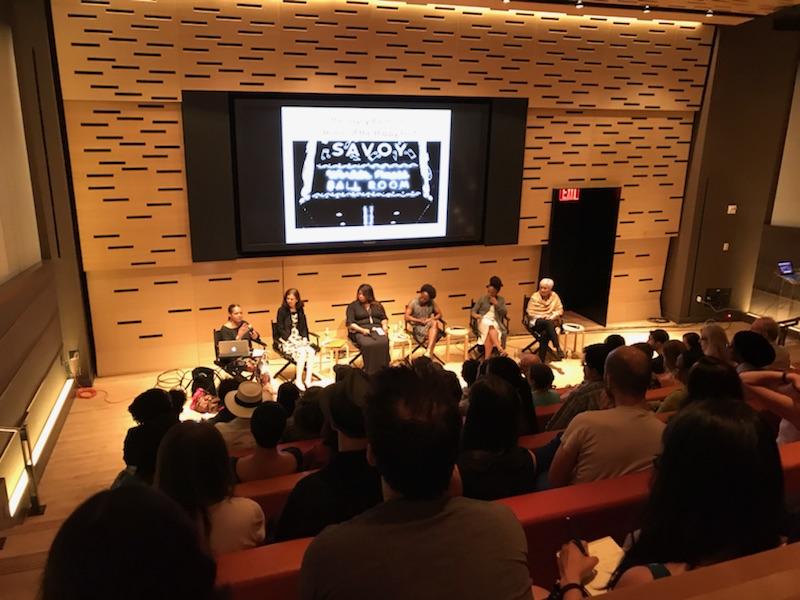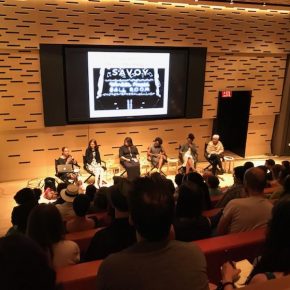Initial Project Summary: This ethnochoreological and phenomenological study is intended to serve as an investigation into the lived experiences of pursuing knowledge of African-American cultural dances, as an dancer of color, with key resources and spaces being controlled by surrogate culture members. This study is planned to ethnographically examine the current representation and perpetuation of the dance styles of Vernacular Jazz, Lindy Hop and House Dance via community member interviews, competitive, educational and social event documentation/observation in the US and abroad. The study is planned to briefly focus on the musical forms synonymous to these communities of practice and how they have affected the perpetuation of these dances and participation of dancers of color. The resulting studies will be compared to ethnographic studies, and documentaries and first person accounts of the dances when they were almost more exclusively held within the African-American community to assess the differences, if any, in communal, pedagogical and performative values. From the comparative analysis, the hopeful intent will be to identify ways to re-enculturate the dance forms to better reflect their cultural origins. While the dances may stem from the African-American experience, in it’s current globalized celebration often includes more cultural surrogate members than originating ones…
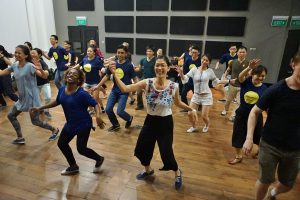
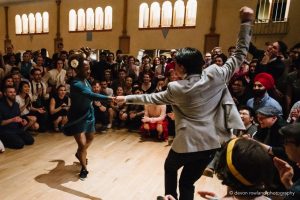
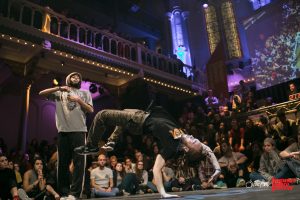
In my effort to better understand the complex and wanting developmental process and phenomena of pursuing knowledge of African-American social dances as an African-American (now my scope of understanding has broadened to include African originating dancers) dancer with key resources and spaces being controlled by surrogate culture members. My study aims to examine the current representation of these dances at their “highest” levels of expression as compared to anthropological and ethnochoreological studies of the dances when they were almost exclusively held within the African-American community. There has been significant research surrounding many of the involved communities, their socio-economic challenges and some of the dances themselves, but there have been few studies that focused on the experience of becoming or being a dancer of color sans cultural guidance from an genealogically similar elder or of the experience of “discovering” the cultural truth of popular and interrelated forms of movement. I hope that this study will reveal approaches to mending the intergenerational gap betwixt the remaining African-American elders and younger practitioners of today, as well as outline methods for re-Africanizing these culturally significant dance forms in expression, creativity and embodiment. Through the ethnography I hope to identifying the white-washing that has been adopted into these styles for the sake of palatability and how to address their effects.
While the focus of my intended research was set forth very clearly, and I hope thoughtfully, it is intriguing to note how it has changed in form and in essence…much like the dances I’m endeavoring to research. Whilst meditating on the expansive intergenerational gaps across the styles and their effects I found myself face to face, accidentally of course, in conversation with the physical manifestation of said gap in the styles of Authentic Jazz, Tap Dance and Lindy Hop in Darlene Askew-Gist. Full of the knowledge that I assumed and was reported to me to have been lost based on conversations with more seasoned educators in the community than myself (almost 100 years of age), I’ve found myself transfixed on her intersectional stories and anything containing her image as I recognize it to be from the “lost years” that many had chosen not to discuss in full. Another realization brought to the forefront, was now the investigation having a connected ( being a dancer first, talented and also of African-American descent) researcher at the helm many study participants seem extremely keen to share that which they had not dared to share with others before. Both an exciting and overwhelming reality to acknowledge, also asserting the fact that I needed a better journaling tool and organizing system for all my notes.
Ms. Norma Miller (98) “The Queen of Swing” and Darlene Askew-Gist sharing their knowledge of Vernacular Jazz movement and The Lindy. Snippet of a longer interview, featured here is Darlene performing a routine known as “Stops”.
In the process of sharing my intended research and beginning recruitment….word has spread amongst the included communities and has positioned me into conversation ( in private and public forums) discussing the history of Lindy hop with my elders and mentors as part of the Lincoln Center Swings Summer programming, the process of de-enculturation and the conventions of naming and of co-opting or as Joseph Roach’s theory frames it the process of surrogation via substitution with fellow artists in the trenches during the International Soul Society Festival in Washington, DC and the global affect of Black Culture in Shanghai with Chinese and Japanese Blues Artists and Swing Dancers.
I had no idea that my concerns, perspective and analogous projections would resonate with so many also searching for a straw of understanding to grasp. However an interlocutor and friend, Rik Panganiban, quoted one of my panel discussions to further highlight the reality of the need for my intended research in this blog post:
Question revealed:
“Highest” level of expression described as performance only – not in the social realm by those once in the position to perform it (black elders ( Lindy Hop/ Conflicting assertions within House Dance)… majority community value was the social. Could this ‘subscription’ to/as the highest form is a supplanted construct of the colonized mindset, as prescribed by those in positions of power? And if so, what does that really mean regarding the documentation of these art forms themselves?
